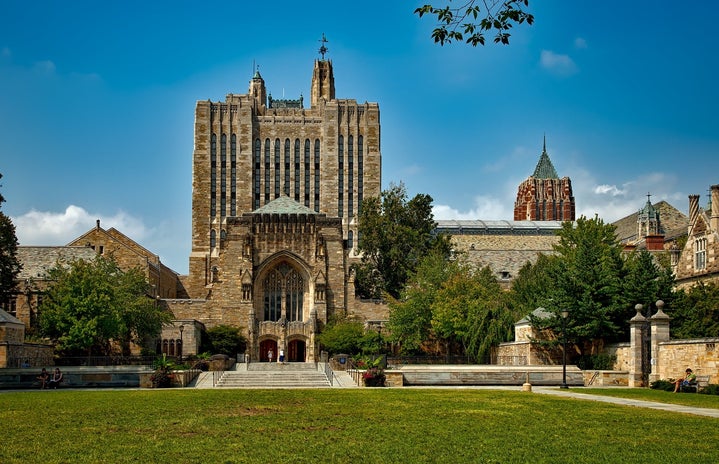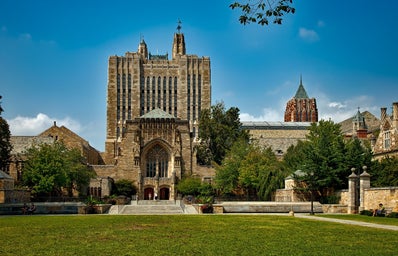Vahni:
Often, I have to remind myself that I’m not white. It sounds a bit ridiculous considering all I have to do is look down at my brown skin and I’ll remember that my ancestors came from an Asian subcontinent. Still, it happens. I’ll be scrolling through my Instagram feed when I come across a post about things that white girls love. I’ll laugh to myself as I think how tragically relatable the picture is before realizing that a post about pumpkin spice lattes and Lululemon leggings isn’t directed at me. It’s mocking the stereotype of girls who go to tanning beds and make up roughly 70% of the U.S. female population (source). This confusion over racial identity can only be explained by my upbringing.
All of my life, I have lived in predominantly white, Judeo-Christian communities. As an Indian-American Hindu, I was a definitive minority, but I never felt that way. While my parents introduced me to their heritage through attending temple celebrations and watching Indian movies, they always let me explore other cultures and traditions. I celebrated Passover with local families, said grace at friends’ dinner tables, and even went to Vacation Bible School with a neighbor. Being surrounded and accepted by so many white people made me believe that there was no major difference between myself and my community. It’s always shocking whenever that illusion is broken.
When I was in third grade, a girl at recess tried to convert me to Christianity because she didn’t want me to go to hell when we died. Recently, when I brought up the fact that I was Hindu, a woman proceeded to tell me that her sister was a Wicca, as though the two identities were connected. One time, a man sneered at my grandfather by calling him “Mr. Brown,” and my grandmother has been wrongfully accused of stealing at a mall. Throughout my adolescence, I have heard people say things like “I’m not really into Indians,” or joke about Indian women tasting like curry. Although these instances are offensive, I usually laugh them off and learn to move on. The thing that annoys me most, however, is the fact that the stereotypes that lead to such ignorance are perpetrated by the media.
I’m a major consumer of television, books, and movies, and I grow very attached to the stories that play out in them. It’s very disappointing then when I struggle to find characters that accurately represent the Asian-American experience, if they attempt to at all. Indian characters are often portrayed as tiger moms, prudes, over-achievers, call-center workers, people obsessed only with grades, and other flat stereotypes that do not allow for dynamic character development. As a young girl, it was especially disheartening to see traditional standards of beauty that only applied to white women. I cling desperately to movies like Bend It Like Beckham, which features an Indian director and Desi actors, in order to remind myself that I can be seen as more than a one-dimensional figure. Luckily, opportunities for Indian actors and artists are improving as shows like Sense8, Quantico, and Master of None offer increasingly holistic conceptions of what Desi people can be. That way, when I tell my incredulous aunts and uncles that I want to be a writer instead of a doctor, I have some examples to back me up.
This brings me to a more hilarious side of being Indian: the reconciling of Indian and American culture. I do not speak Telegu like the rest of my family and I’ve only been to visit my family in Tamil Nadu and Andhra a few times. However, our Indian family and friends in the US do not let me escape the influence of Indian culture. For example, although my white friends praise me for my “tan” skin and slim figure, my elderly family members will worriedly tell my mom that I’m becoming too dark and frail. These are undesirable traits in a colonialist culture like India’s, but highly prized amongst Americans. It’s also funny to see how white people approach Indian customs. One time, an Indian family in my grandparents’ neighborhood held a large social function. As part of Indian tradition, all the guests left their shoes outside the garage door. Upon seeing so many shoes, a white couple came up and asked how much the family was selling them for, believing they had happened upon a rummage sale.
Despite societal prejudices I’ve faced, being an Indian-American has broadened my perspective and allowed me to be more empathetic. Being on the outside means being able to empathize with other minorities and also being able to share my culture with people who are willing to listen. I smile whenever my friends admire pictures of me in a sari or whenever they think the masala dosas I order are a little too spicy. I also get excited when my friends ask me insightful questions about my family’s South Indian heritage or the teachings of Hinduism. I’m genuinely thankful for my identity as I’ve come to realize that my race does not inhibit what I can become, but rather adds to the dimensionality of who I am.
Anushka:
Many times in my life I have been referred to as a “coconut,” someone who has a brown skin tone yet acts like a white girl on the inside. I am Indian; however, growing up in the U.S. and never visiting India have made me think deeply about my culture and identity. I grew up in predominantly white areas. I spent my teenage years in one of the whitest places I have ever lived in, Mercer Island. This transition to adolescence was extremely difficult. I had no sense of my culture other than what my parents have taught me through celebrations and traditions, so I paid no attention whatsoever when trying to learn about my Hindu culture. A majority of my friends back home are white and I spent most of my time with them and learning more about the American culture. Occasionally, my mom would nag me about not knowing enough about my heritage and experiencing too much of the American culture.
Spending most of my life in Seattle, I grew accustomed to the “basic” things in American society. Drinking Starbucks, wearing flannels, and Snapchatting literally everything, you name it! I am a white girl inside an Indian girl’s body. While many of my friends joke about me being a “coconut” or being called “west coast trash,” I find it odd how I have grown to accept myself this way. However, I have also accepted being the basic Indian girl as well: eating spicy food, gossiping, and most importantly, how to entertain myself during those long (and I mean long) Indian weddings.
Whenever I go out with my friends to eat, I always end up ordering the spiciest dish out of all of us. They ask me “Anushka! How can you eat hot wings!?” It’s in my blood, what can I say. My mom has been training my tongue to handle the spice of Indian food ever since I was little. I think that may have been the best decision my mom has ever made because I love her spicy chicken curry so much. Every morning for breakfast when I have my omelet, I always cover my plate with hot sauce. Some of my friends say I should follow Beyoncé’s advice in “Formation” and carry “hot sauce in my bag, swag.”
One of the most significant facets of every Indian family is gossip. No one knows how to gossip more than my grandma (and I love her for it!!). Every time I would call her, we would somehow end up telling me about my mom not sending me enough care packages or my four-year-old cousin who never stops talking. As harsh as it may be, gossiping in my family is equivalent to talking behind someone’s back, yet we still love each other. If someone happens to find out, then the drama begins. And, since no drama has erupted in the Patel family (knock on wood), we are either not gossiping or we are all really talented at keeping secrets.
Being Indian was never a struggle for me until I had to take standardized tests. There were two problems. One: I really hate standardized tests; they stress me out. Two: when we have to fill in that little box asking us about our race, there was only five options: White, African-American, Asian, Pacific Islander, or Other. Indian is classified as Asian as it is a part of the Asian sub-continent. Unfortunately, though, most Americans classify Indian as separate from Asian. My young self did not know what to categorize myself as until one day where I had to ask my mom. She told me to circle “Asian” because India is a part of Asia, therefore you are Asian. Many people still misunderstand this today. They say, “Oh you’re not Asian, you aren’t from China or Japan.” I completely disagree with this and it is frustrating being told you are not something when really, you are.
Overall, being Indian is great! The spicy food, long chats about people with your grandma, dancing like a fool to those hit Bollywood songs (how I stay entertained at Indian weddings), celebrating traditions and festivals with family, are all central to my Indian identity. However, my American identity shines simultaneously. I love a Pumpkin Spice Latte and a colorful flannel as much as the next “basic white girl.” I enjoy being called “west coast trash” by my friends as well as a “curry ball” because that is my identity and I am proud of that. I have found myself as an Indian growing up in America, and I love the person I have grown into today: someone who is proud of her heritage yet hold onto values from the society she grew up in.
Image Credit: Annmarie Morrison, Vahni Kurra, Norman Keys

